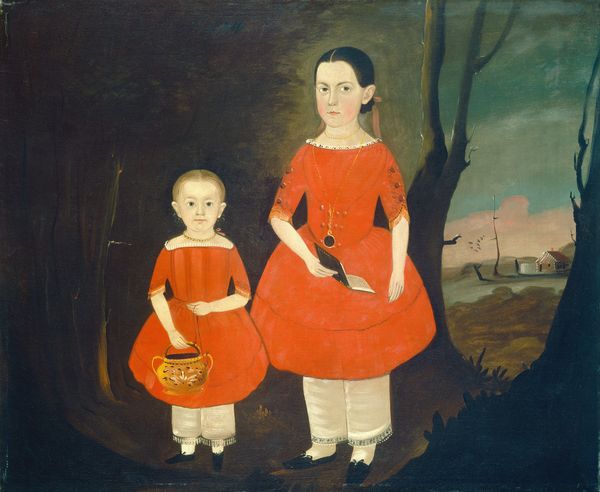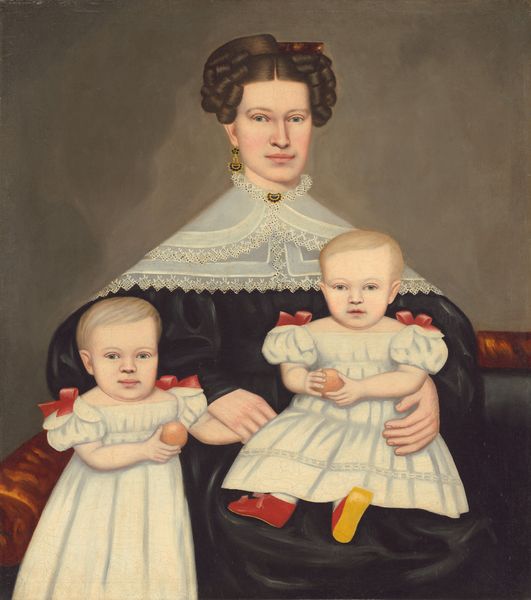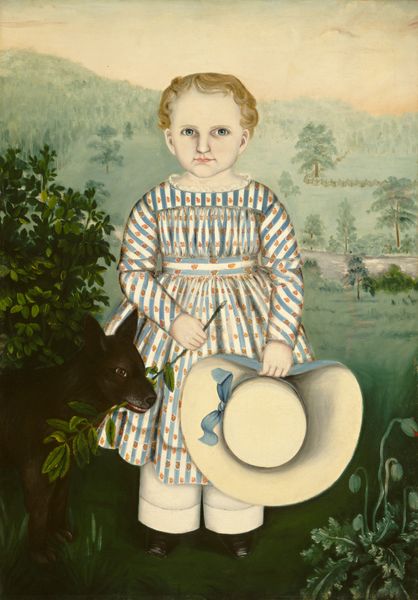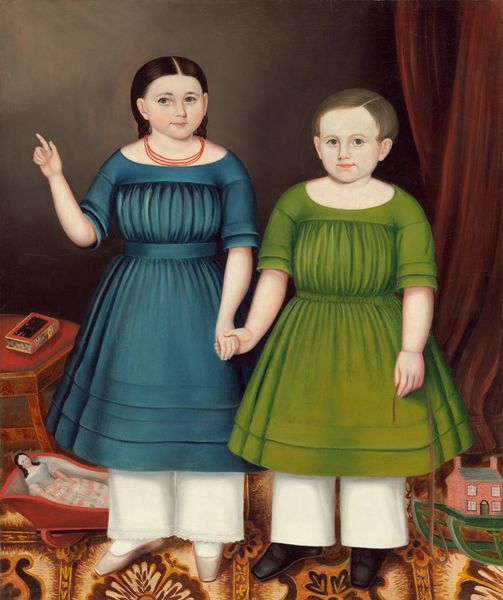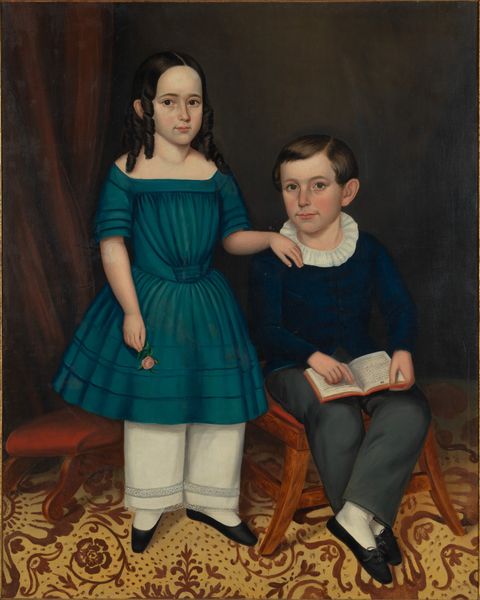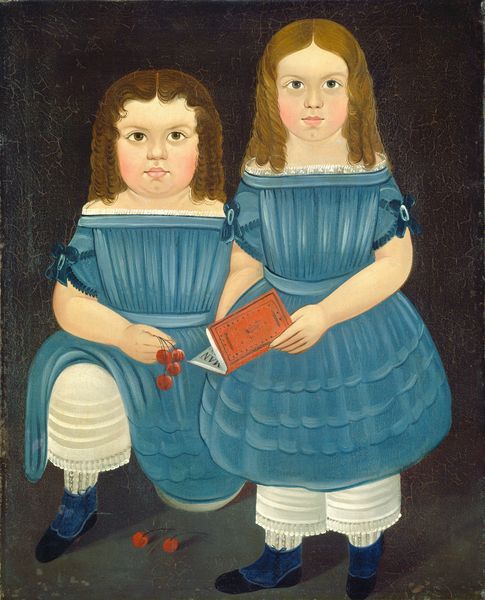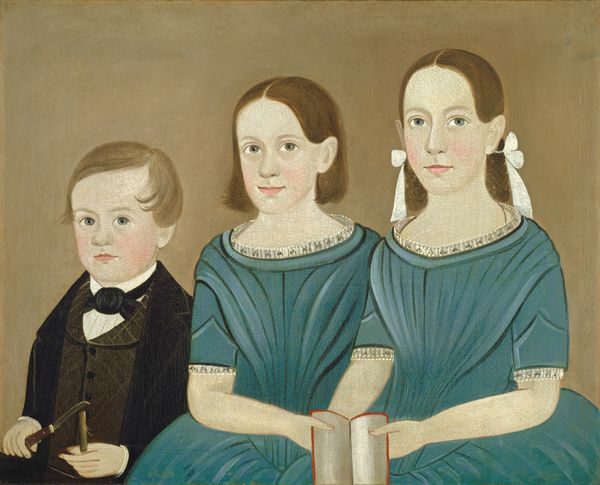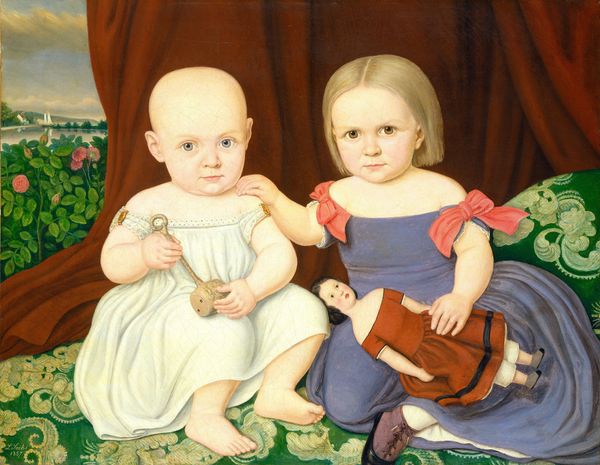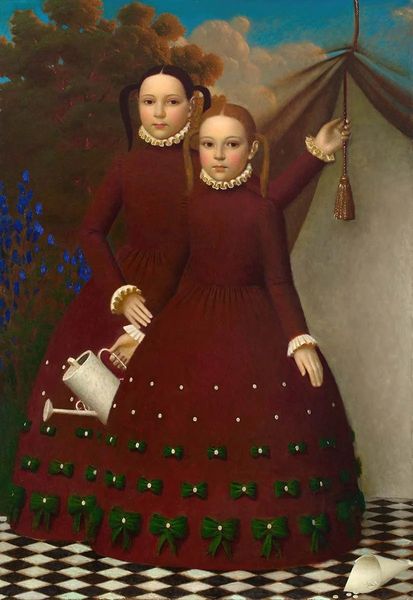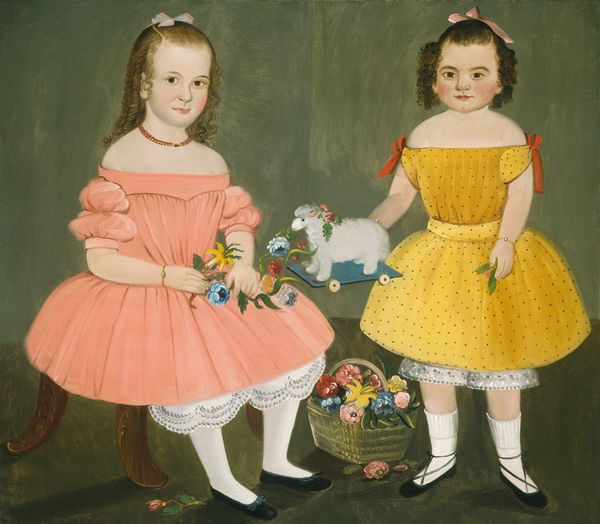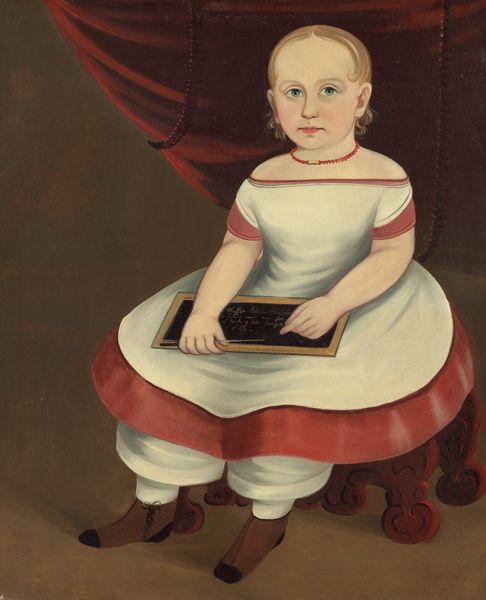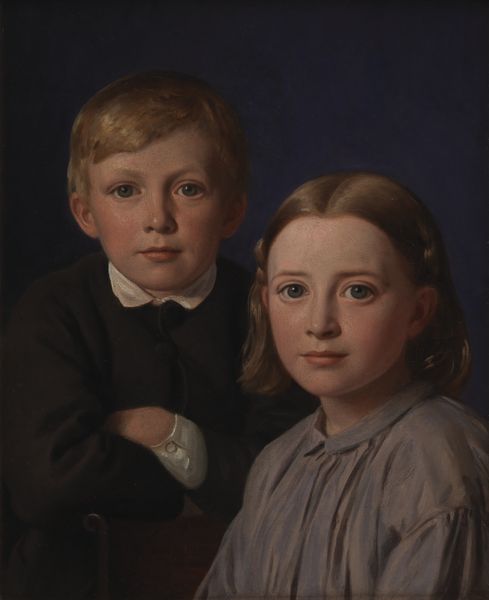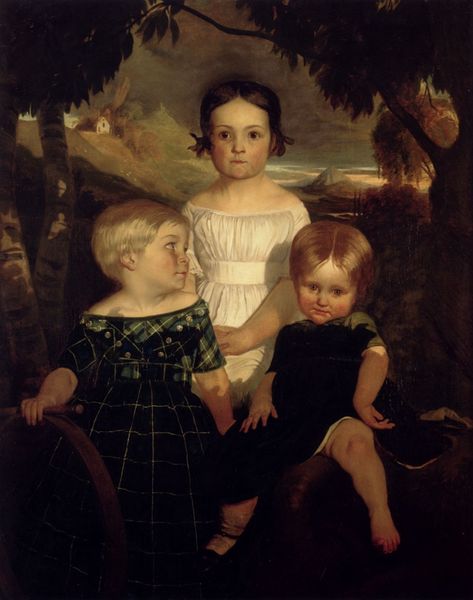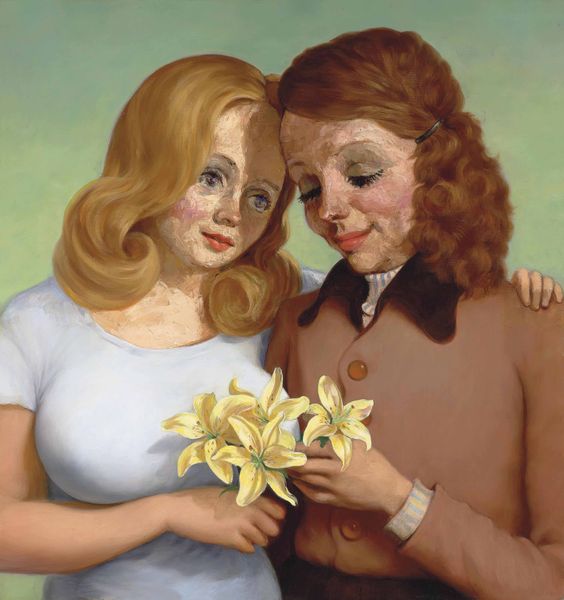
painting
#
portrait
#
painting
#
group-portraits
#
romanticism
#
animal portrait
#
portrait drawing
#
genre-painting
#
portrait art
Dimensions: overall: 111.7 x 88.8 cm (44 x 34 15/16 in.) framed: 122.5 x 99.4 x 6.3 cm (48 1/4 x 39 1/8 x 2 1/2 in.)
Copyright: National Gallery of Art: CC0 1.0
Editor: This is Susan C. Waters's painting, "Brothers," circa 1845. It’s a rather formal double portrait, and the boys’ expressions are so serious. What strikes you most about this piece? Curator: What jumps out to me is the staging of childhood within the context of 19th-century America. It is not a candid snapshot, but rather a carefully constructed presentation of social standing. Waters seems conscious of projecting an ideal. What details reinforce this impression for you? Editor: I guess the matching outfits and the way they are holding objects – almost like props. The book and the apple seem significant. Curator: Precisely. These are symbols connected to societal expectations. Education, represented by the book, and prosperity, perhaps suggested by the apple. Notice the dog too – its a symbol of loyalty and further domestication of nature for these privileged landowners. Would you say Waters reinforces the public role of this young class within a socio-political structure? Editor: Definitely. They seem positioned, not just as individuals, but as members of a class. It's as if she's capturing a societal expectation. I find it really fascinating how art can act as a visual record of a specific time. Curator: And also actively shaping it! This is how the elite classes visually communicated their value. We tend to romanticize childhood, but pieces like this remind us it's often been molded by social and political considerations. Editor: I see that now. I hadn't considered how deliberate and calculated portraits like this can be, reinforcing existing power structures. Thank you for widening my appreciation of it.
Comments
No comments
Be the first to comment and join the conversation on the ultimate creative platform.
